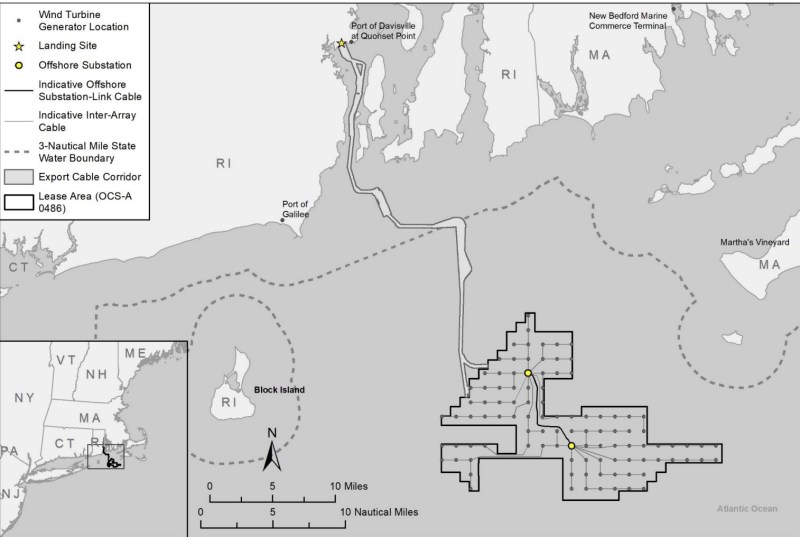The federal Bureau of Ocean Energy Management has completed its environmental review of the Revolution Wind offshore energy project, which would build up to 100 turbines 15 nautical miles southeast of Point Judith, R.I.
The agency’s final environmental impact statement will be published in the July 21 Federal Register. That will clear the path for the 704- to 880-megawatt project to become the fourth utility-scale project approved off the U.S. East Coast since the Biden administration took office in 2021.
Revolution Wind has been a joint venture between Danish wind power developer Ørsted and Eversource, a New England power distribution company. Eversource in June said it is exiting offshore wind generation, to instead focus on the distribution side. That follows a move by New Jersey utility company PSEG, which ended its joint venture with Ørsted to pursue a similar strategy.
“BOEM used the feedback we received from Tribal Nations, industry, ocean users, communities, and stakeholders to help inform our decisions throughout the environmental review process and ensure that we are addressing potential impacts,” BOEM Director Elizabeth Klein said in announcing the EIS release. “This milestone represents another important step forward in building a new clean energy economy here in the United States.”
The final EIS is available on BOEM’s website. The agency says comments from local community members, commercial fishing interests, other ocean users, federal, tribal, state, and local government agencies, non-governmental organizations and the public all influenced the final EIS.
BOEM said the final EIS document will include what the agency calls “preferred alternative G, which would meet energy needs by installing fewer wind turbines to reduce impacts to visual resources, benthic habitat, and allow for ocean co-use. This alternative G would include up to 79 possible positions for the installation of 65” wind turbine generators.
BOEM also plans o make a final decision this summer on whether to approve the Revolution Wind construction and operations plan. If that happens it will be the fourth approval, following on Vineyard Wind and South Fork Wind off southern New England, and most recently Ørsted’s Ocean Wind 1 project off New Jersey.
“Today’s news is a critical step forward for Rhode Island and Connecticut’s progress toward their clean energy goals,” said Josh Kaplowitz, the American Clean Power Association’s vice president for offshore wind. “Once approved, Revolution Wind Farm will create an estimated 1,200 direct construction jobs and thousands of additional indirect jobs through the project’s investment in the local economy.”



.JPG.small.400x400.jpg)

